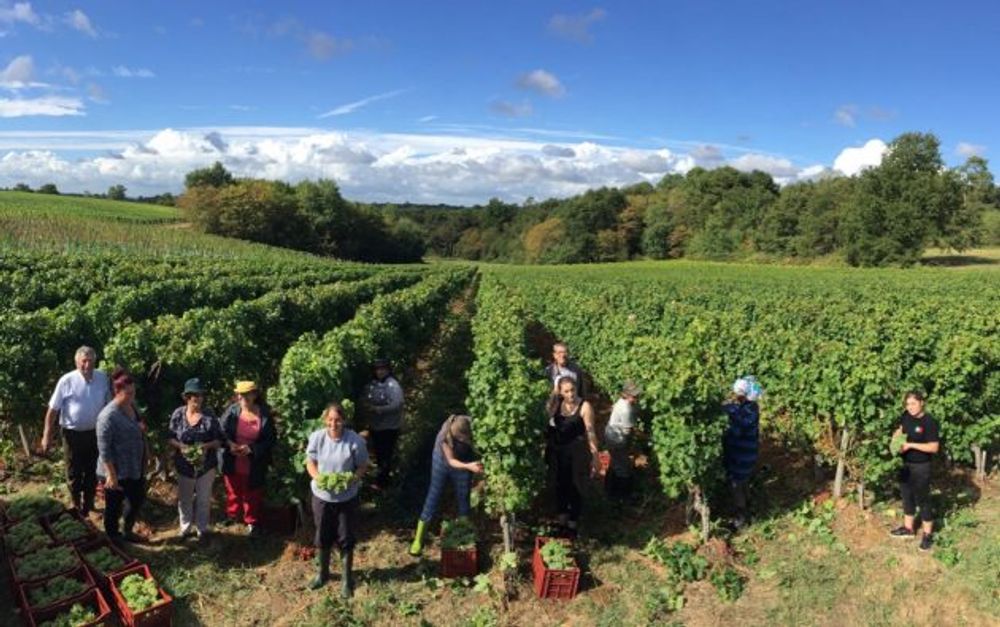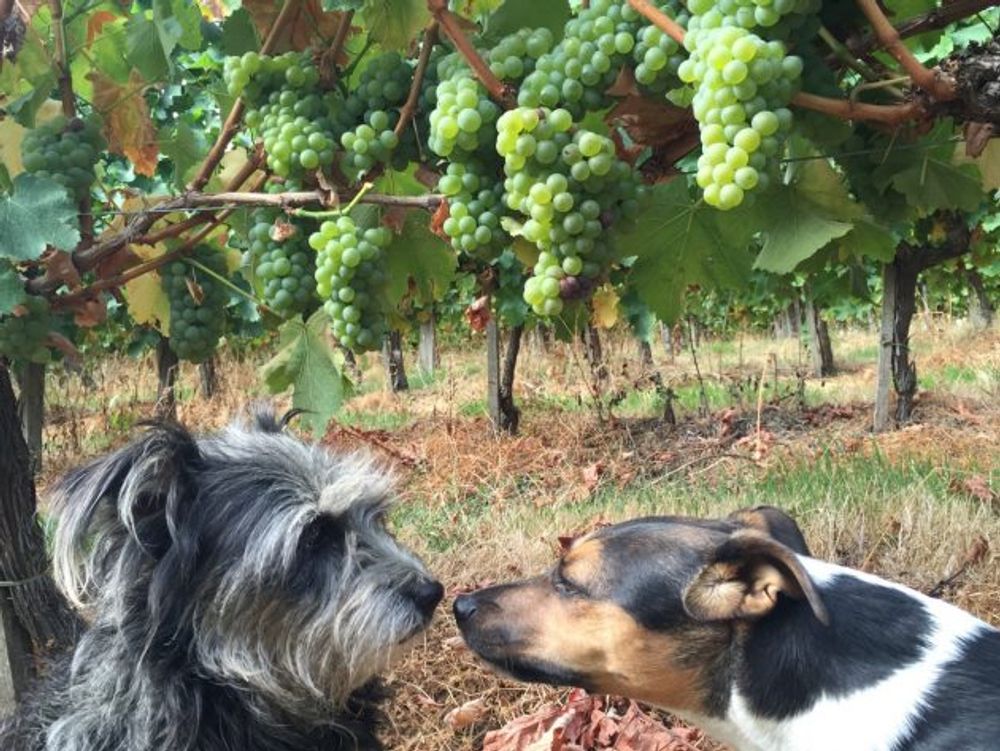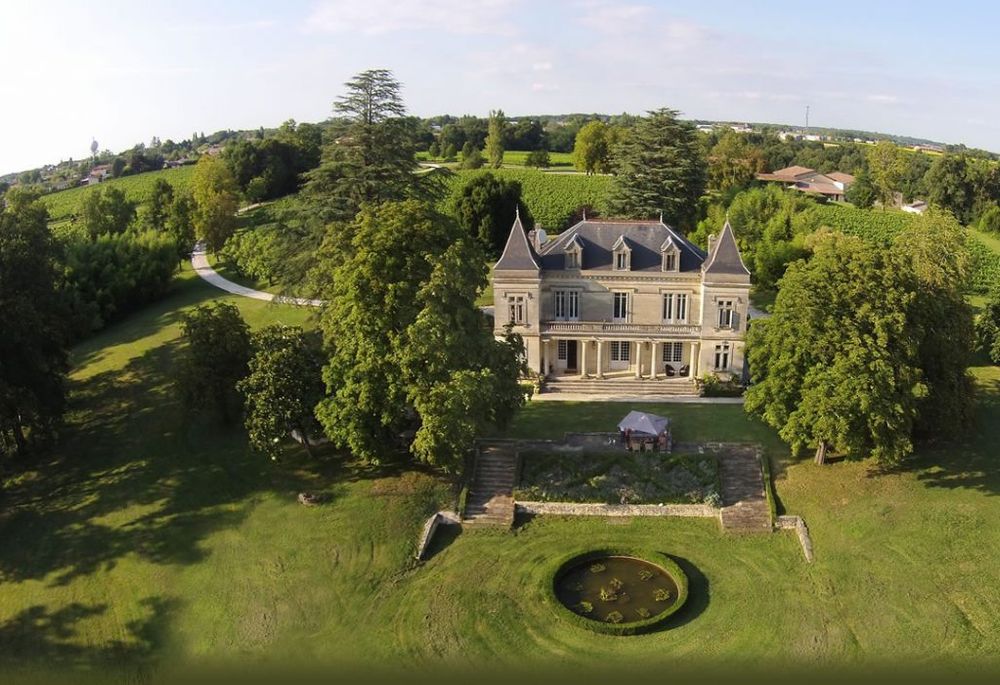Here’s Gavin Quinney of Château Bauduc 18 things you need to know about the Bordeaux 2018 vintage.

The grape picking team and Quinney family at Chateau Bauduc
• Three warm and dry months from early July through to the September and October harvest, with record hours of sunshine, made for a very ripe vintage.
• The first half of the year was one of the most challenging, with a wet winter and a wet, humid spring leading to mildew being a huge threat.
• (It was always going to be a ‘game of two halves’ once France won the football World Cup in July.)
• Production overall in 2018 was the same as the average of the previous 10 years, following on from the small, frost-affected crop in 2017.
• 2018 is an excellent vintage for red Bordeaux, with powerful, rich and opulent wines across most appellations.
• 2018 was a good to very good year for dry whites, with some soft and attractive sweet whites from a prolonged, dry harvest that didn’t lend itself to noble rot.
• Alcohol levels for reds are relatively high, with 14% the norm for the Cabernet Sauvignon-Merlot based wines of the Left Bank, and often higher still for Merlots and the Merlot-Cabernet Francs of the Right Bank.

Chef Rick Stein helping Gavin and Angela Quinney sort the good from the very good grapes
• Although the red wines are deep, lush and seductive, this can mask the tannic core and many of the top wines are built for the long haul. Think 10+ to 30+ years for the best wines.
• 2018 is the fifth fine vintage in a row for the important northern Médoc appellations of Pauillac, Saint-Julien and Saint-Estèphe.
• 2018 is not as consistently excellent a year as 2016, but it is right up there alongside 2005, 2009, 2010 and 2016 for quality – and, for Margaux and Saint Emilion, with 2015.
• Eric Boissenot, the consultant oenologist for most of the leading châteaux in the Médoc, told me that 2018 is like a blend of 2009 and 2016. Few château owners on the Left Bank are going to argue with Eric.
• 2018 is unique among the top vintages this century for having such a huge variation of yields among the top châteaux. This is mostly down to the impact of mildew up until mid-July.
• To bio or not to bio. 2018 is the vintage that really asked the question of growers following an organic (‘bio’ in French) or biodynamic approach in the humid climate of Bordeaux.

Even the Quinneys dogs, Margaux and Pavie, know the 2018 vintage is going to be a belter
• An untroubled harvest, with the opportunity to pick and choose dates, gave winemakers a range of options. On the whole, we’re seeing a move to more refined styles, rather than blockbusters.
• 2018 might have been an easy harvest but it wasn’t a straightforward vintage for winemakers. Three months of sun and drought meant less juice, higher alcohol, powerful tannins, concentration, lower acidity – and therefore careful extraction.
• The extraordinary investment in new cellars, new wineries and new kit continues unabated. Hundreds of châteaux have been transformed this century – many in the last decade alone – and we’re seeing this in the wines, with greater selection and far more precision.
• Good terroir has a huge impact with a drought. Coupled with the full-on nature of the vintage, and the huge threat of mildew earlier on, high quality wine is not a given further down the price pyramid.
• There are, though, hundreds of great wines from dedicated growers at all price points in 2018. But I would say that.

Gavin Quinney’s picture postcard perfect Chateau Bauduc in the heart of Bordeaux
- You can read more of Gavin Quinney’s thoughts on the 2018 vintage as part of his popular, and very good regular newsletter for his customers.
































